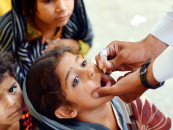Govt to collect data to prevent suicides
SMHA head points to unemployment, poverty, debt as contributing factors

In a bid to investigate the reasons behind the growing number of suicide cases in Tharparkar, the Sindh government has started collecting province-wide suicide data from different districts of Sindh.
Pakistan Peoples Party (PPP) Senator Dr Karim Khawaja, who is also the head of the Sindh Mental Health Authority, told The Express Tribune that the government had started a survey in collaboration with the Sindh Health Department to collect the last five years’ data about suicides throughout the province.
Dr Khawaja, who had recently visited different areas of Sindh, including Tharparkar, said that a high rate of suicide had long been reported in Tharparkar.
“It is not clear whether the issue only exists in Thar or if it is a wider problem in the province. That is why the government has initiated this survey throughout the province,” he said.
According to Dr Khawaja, during his visit to the impoverished desert district, he was told that suicides are most common among the Hindu residents of the area, with multiple reasons behind the tragic incidents.
“Many people face problems like unemployment, poverty, and debt-related issues, which could be a contributing factor to the high rate of suicide,” he elaborated.
According to Khatau Jani, a local journalist from Mithi, 95 per cent of the Hindu population in Tharparkar belongs to scheduled caste communities such as Kohli, Bheel and Meghwar.
“People belonging to these communities face severe socio-economic problems, and therefore, most of the suicide cases come from these communities,” the journalist claimed.
A psychiatrist from Civil Hospital Mithi, Dr Bharat, explained that there were several causal factors behind the high incidence of suicide in Tharparkar district.
“Poverty remains a major issue in many parts of Thar because of prolonged drought conditions in the region. However, there are other reasons behind suicides too,” he said.
According to Dr Bharat, the actual number of suicide cases in Tharparkar could be much higher than reported. He added that the majority of the suicide incidents went unreported.
“The number of suicides by women is around 20 per cent higher than incidents involving a male victim,” he said, adding that many such deceased women were not even brought to the hospital.
Per a survey report compiled by the Association for Water, Applied Education, and Renewable Energy (AWARE), at least 37 incidents of suicide were reported in the district during the first half of this year.
AWARE executive director Ali Akbar Rahimoo explained the survey report covered data from January to July 10.
According to the report, three talukas of the district - Islamkot, Mithi, and Nagarparkar - out of seven, are the worst affected places, giving rise to 29 of the 37 cases. At least 12 persons committed suicide in Islamkot taluka, nine in Mithi and eight in Nagarparkar during this period. Islamkot, with the most cases, is very underdeveloped, with a majority of its residents being impoverished.
According to the report, the Covid-19 pandemic was also one of the reasons for the high rate of suicides this year, as several people lost their jobs because of the outbreak and the subsequent lockdown.
The report stated that most victims who committed suicide were in the age bracket of 15 to 30 years. Meanwhile, of those committing suicide, adult women formed 51 per cent, while 38 per cent were men and 11 per cent were children. Besides, some 65 people committed suicide in the district during 2016, 71 people in 2017, 69 in 2018, and 70 persons in 2019.
Published in The Express Tribune, September 5th, 2020.



















COMMENTS
Comments are moderated and generally will be posted if they are on-topic and not abusive.
For more information, please see our Comments FAQ